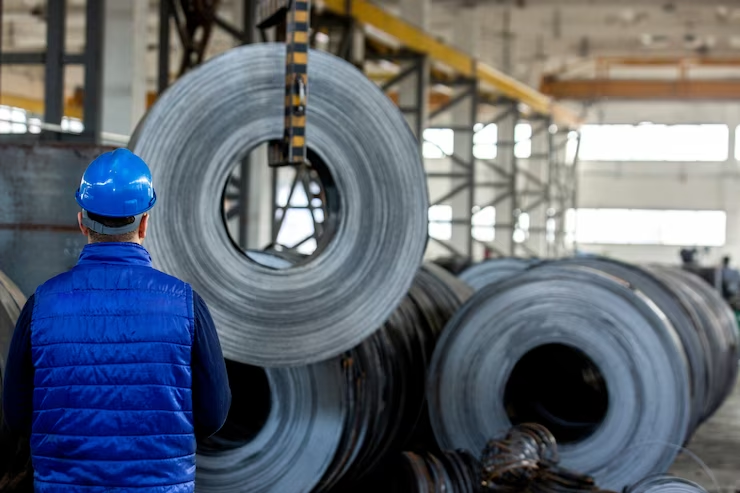When it comes to selecting the appropriate type of steel
sheets for your project, the choice between cold rolled steel sheets and hot
rolled steel sheets is a crucial one. Each type has its own distinct
characteristics, advantages, and disadvantages, making it essential to
understand their differences before making a decision. In this comprehensive
guide, we will delve into the specifics of cold rolled steel sheets and hot
rolled steel sheets, helping you make an informed choice based on your
project’s requirements.
Overview of Cold Rolled Steel Sheets

Cold rolled steel sheets are manufactured through a process
that involves rolling the steel at room temperature or slightly below it. This
process results in steel sheets with smoother surfaces and tighter tolerances
compared to their hot rolled counterparts. Here are some key characteristics
and benefits of cold rolled steel sheets:
1. Surface Finish:
Cold rolled steel sheets have a smoother and more consistent
surface finish due to the rolling process at lower temperatures. This makes
them well-suited for applications where appearance matters, such as in
architectural elements or consumer products.
2. Dimensional Accuracy:
The cold rolling process ensures tighter dimensional
tolerances, making cold rolled steel sheets more precise in terms of thickness,
width, and length. This accuracy is crucial for projects that require precise
measurements.
3. Hot Rolled Steel Strength:
Cold rolled steel sheets generally exhibit higher strength and hardness compared to hot rolled sheets. This makes them suitable for applications requiring load-bearing capabilities or where durability is a priority.
4. Cost Considerations:
Cold rolled steel sheets are typically more expensive than
hot rolled sheets due to the additional processing steps involved. However,
their improved surface finish and dimensional accuracy can offset the higher
cost for specific projects.
5. Weldability:
Cold rolled steel sheets are known for their excellent
weldability, which makes them ideal for applications that require welding or
other fabrication processes.
Overview of Hot Rolled Steel Sheets

Hot rolled steel sheets are produced by rolling steel at
high temperatures, typically above the recrystallization temperature of the
material. This process leads to steel sheets with a scaly surface and less
precise dimensions. Let’s explore the key characteristics and benefits of hot
rolled steel sheets:
1. Surface Finish:
Hot rolled steel sheets have a characteristic rough and
scaled surface due to the high temperatures involved in the rolling process.
This surface finish might not be suitable for projects where aesthetics are
important.
2. Dimensional Tolerances:
Hot rolled steel sheets have looser dimensional tolerances
compared to cold rolled sheets. While this might not matter for certain
applications, it can be a concern for projects requiring precise measurements.
3. Formability:
Hot rolled steel sheets are more ductile and have better
formability than cold rolled sheets. This makes them a preferred choice for
applications that involve shaping, bending, or deep drawing.
4. Cost Considerations:
Hot rolled steel sheets are generally more cost-effective
than cold rolled sheets due to the simpler manufacturing process. They are
often chosen for projects where surface finish and dimensional accuracy are not
critical.
5. Weldability:
Hot rolled steel sheets can be susceptible to issues related
to welding due to their scaly surface and potential variation in chemical
composition. Additional precautions might be necessary during welding
processes.
Cold Rolled Steel Strength:
Cold rolled steel undergoes a different production process that involves rolling the steel at room temperature. While this process enhances the surface finish and dimensional accuracy, it may lead to slightly lower tensile strength compared to hot rolled steel. However, the reduction in strength is often marginal and might not significantly impact the steel’s suitability for various applications. Cold rolled steel’s strength is still sufficient for many uses, especially those that prioritize surface quality, tight tolerances, and aesthetics.
Choosing the Right Type for Your Project
The decision between cold rolled steel sheets and hot rolled
steel sheets should be based on the specific requirements of your project.
Consider the following factors when making your choice:
- Project Specifications: Determine the required surface finish, dimensional accuracy, strength, and formability needed for your project.
- Aesthetics: If appearance is crucial, cold rolled steel sheets might be the better choice due to their smoother surface finish.
- Budget: Evaluate your budget constraints, as cold rolled steel sheets are generally more expensive than hot rolled sheets.
- Fabrication Processes: Consider the fabrication methods your project will involve, such as welding, bending, or deep drawing, and choose the type that offers better compatibility.
- Durability: For load-bearing applications or those requiring higher strength and hardness, cold rolled steel sheets might be more appropriate.
Conclusion:
In the debate of cold rolled steel sheets vs. hot rolled
steel sheets, there is no definitive winner—it all depends on the specific
needs of your project. Cold rolled sheets offer superior surface finish,
dimensional accuracy, and strength, while hot rolled sheets are more
cost-effective and have better formability. By carefully assessing your
project’s requirements and considering factors such as aesthetics, budget, and
fabrication processes, you can make an informed decision that aligns with your
goals. Remember that a collaboration with steel experts can also provide
valuable insights and recommendations tailored to your project’s unique
demands.
Related Post:
-
Sheet Metal Fabrication Trends 2024: What to Watch For
-
How the Electric Vehicle market is driving changes in sheet metal fabrication technology
-
Sheet Metal Bend Relief Guidelines: Ensuring Successful Fabrication
-
Essential Tools and Equipment for Ductwork Fabrication: Ensuring Efficiency and Quality
-
Sheet Metal Bending in Architectural Design: Transforming Buildings with Curved Metal